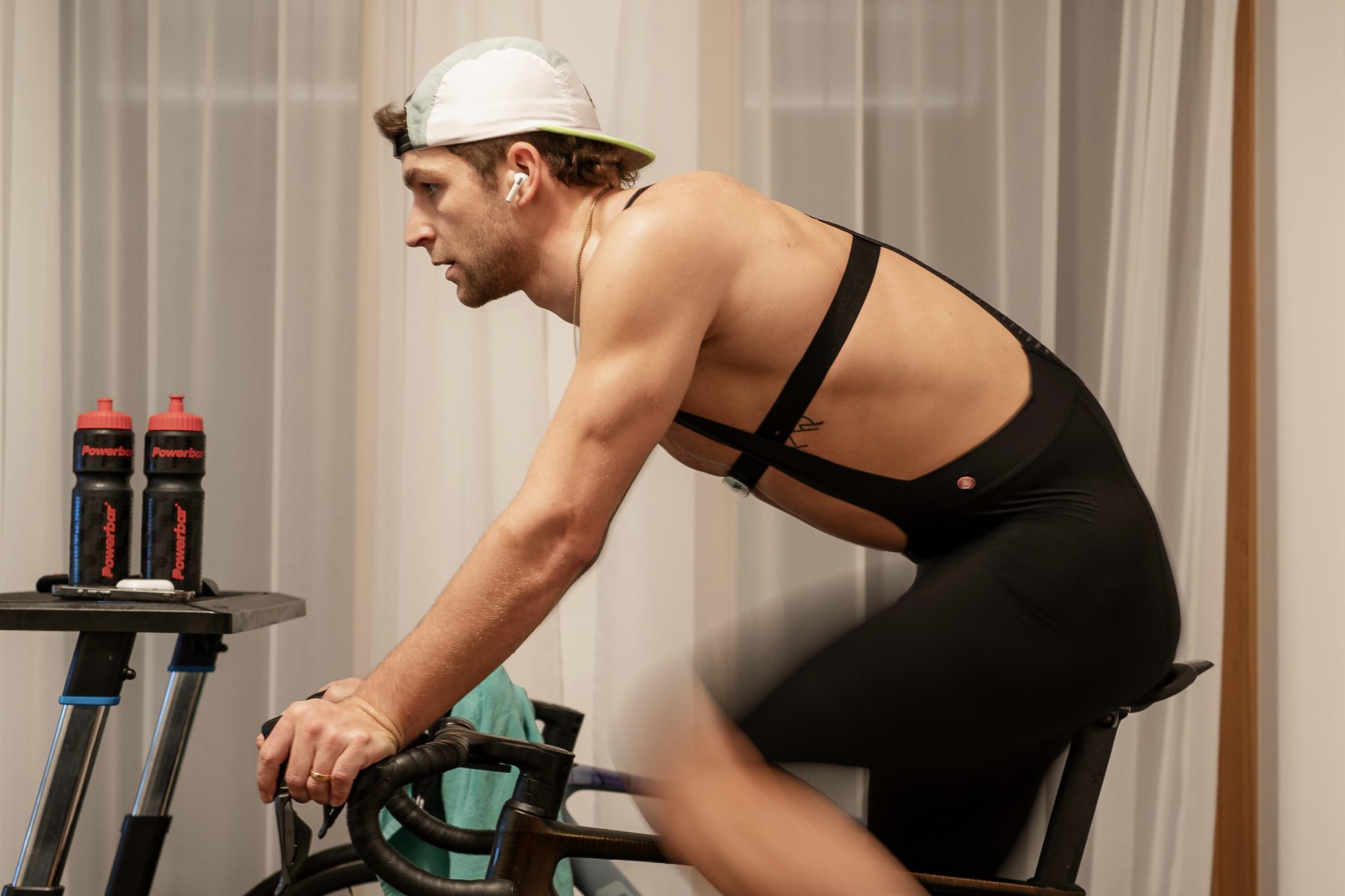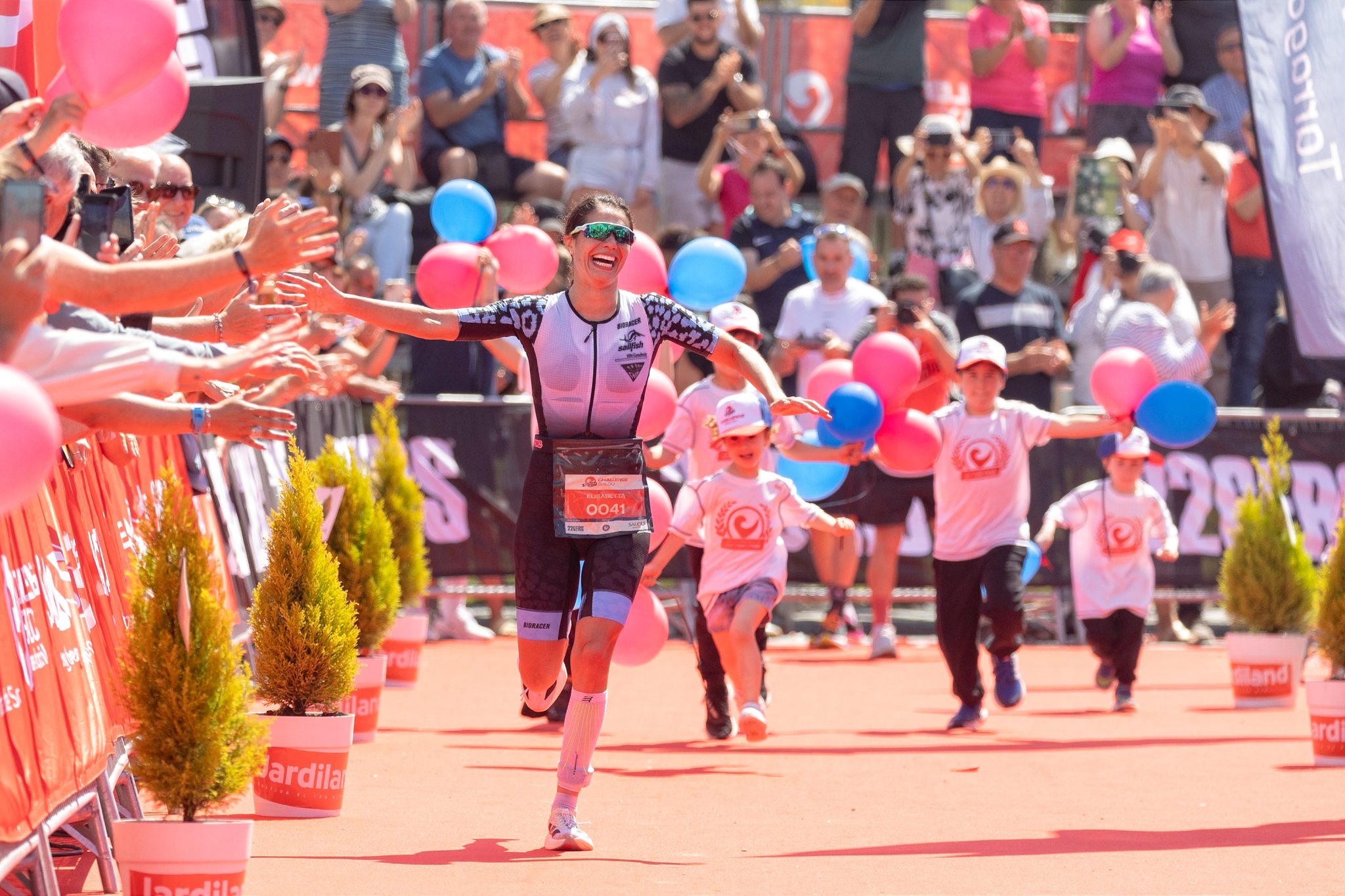The start. It’s always the start.
That’s where the stress is highest. You know it’s gonna be a long day, and it’s never about the hare but the tortoise. But for whatever reason, we’re a ball of nerves, especially as we start dipping the toe into the water. Because the start can be frenetic. Scary. Nerve-wracking.
Fret not! The start of the swim doesn’t have to be the thing to dread; it can actually be your asset. We break down four tips to your best swim start to take away some of the stress. With a bit of planning and a cool, calm and collected approach, you can actually learn to embrace the swim—and make it one of your race-day weapons.
Drink Coffee (or morning Red Bull) First Thing!
There is nothing worse than getting in the water for a mass start, or being in the middle of your wave start, inching forward, and… nature calls. And the clock ain’t waiting. Before you go, you need to, y’know….GO.
This can be alleviated by getting caffeine into your system, first thing in the morning. Enter our hero: coffee. This is easiest when we all want a coffee to wake up anyway. But caffeine has the special ability to activate the urge in your body to go to the bathroom. With cholorgenic acids and melanoids found in coffee playing a role in stimulating your gut, even decaf can get things moving.
So before you start pounding oatmeal, brew a cup and get that in your system, so you can get Number Two out of your system, ideally before you even get to the race venue. Because you really don’t want to be waiting in line at a porta-potty, anyway. Ew. And you sure don’t want to have to go when you’re treading water and getting the “two minutes to go!” announcement over the P.A. That’s not a great way to start the race.
Warm Up
We’ve had QR pro Haley Chura address this in a previous blog about getting warmed up for the swim, but getting the blood going before the gun is crucial; if you’ve already pushed your heart rate up a few times before the start, you’re less stressed when it’s go time.
Haley’s tips? Get your wetsuit on early, and take your time with it; just putting on your wetsuit is a bit of workout in its own right, but doing so ensures you take your time to prevent digging any nicks into your suit. It also allows you to really pull the suit up properly; up the legs and snugly into the crotch, fully up the torso, and up the arms into the armpits, with no gapping under the underarm. Once that HYDROsix2 or HYDROfive2 is on and zipped up, you’re truly ready to swim—and a bit warmed up.
A very short run before you’re in the water (even in your wetsuit on a cold morning start) will help get you warmed up and get the blood moving. Something as simple as a two-minute jog down to the end of the parking lot and back, with little 15-second pick-ups is often enough.
Of course, if you have the ability to warm up in the water ahead of start time, a little two-minute out-and-back (near the start line, so you don’t venture too far from the race) with those same 15-second pickups is of help as well.
Line Up
For those experienced, strong swimmers looking to place well in their age group, there’s one place you want to be: on the front line. It’s that simple. Search for that clean water, or those fast feet and that lead group that you can latch onto for a tow to T1.
But for triathletes new to the swim—or even veterans that know their place—this is an important one: place yourself where you’ll be most comfortable to execute a solid swim, without stress. By “stress” we mean not getting swum over by faster swimmers from behind. Or caught in the midst of a washing machine of arms and legs, splashing. These things can cause anxiety and cause you to either. So if the swim is routinely a stressor and you want to take the stress level down, seed yourself mid- to back of the group. Your cortisol will thank you.
The other thing to consider when lining up is how you breathe while swimming. Some fast swimmers may look at the shortest line to the first buoy. And for for bi-lateral swimmers (those that breathe either to the left or right), placement at the swim start is wherever you like—that shortest line is always a hot option.
But for beginners, if you breathe to one side, make the opposite side the one you place yourself. For example, if you’re a right breather, set up to the left of the starting line. Why? You have a clear view of all the other swimmers. If you’re on the far edge of the course, not only can you reduce stress by reducing the chance of someone swimming over you (or accidentally swimming over someone else) on your blind (left) side, you can sight on your own, while also using the swimmers around you as a guide to the correct path to the first buoy. You may not have the fastest line to the first can, but it’ll be low stress, which for many swimmers, is a good thing.
Pace Yourself
The start of the race is always exciting. The gun goes off, and EVERYONE is going hard and fast. But wait! Is this sustainable? You have to remember, as excited as you are, everyone is as pumped-and most are overdoing it, trying to get on a pair of feet they probably should let go of. For the pace everyone seems to all be going, 90 percent are overcooking their effort in the first 150 yards.
And we’ve seen it, at every race; after a few hundred yards, there is a mass separation; the fast swimmers that were truly able to sustain that torrid start effort, and the rest, who begin to pay for their their race-day exuberance with a spiked heart rate, worn-out arms and legs, just trying to recover—while in the middle of a race, mind you—from going out too hard. (And you can amplify this effect times 10 in races at altitude, where the thin air and minimal oxygen will really get ya!)
So when the gun goes off—give it a second or two, and start your swim—with ease—and ramp into it. It’s gonna be a long day with a bike and run to follow, so really what does two seconds mean in the grand scheme of your day? Not much. So pace as if you’re in the pool. If you happen to find a swimmer your same speed, you’re in luck; ease behind their feet and pull into their draft (but be kind and try not to slap their feet!) and enjoy a bit of a tow.
In the event you do have a heartrate spike, and you’re in the middle of a scrum of athletes, remember the backstroke; flip over, keep your forward progress, and take the opportunity to catch your breath. In a minute or less, you’ll be ready to roll back onto your front and begin freestyle again.
If all goes well, you’ve paced perfectly and in the last few hundred yards of the swim you feel spry, give it a go and ramp up your speed to the swim exit. And exit feeling like you had a strong, balanced swim.
Four simple tips (can you believe coffee is a tip?) but it’s all part of preparation; With a bit of foresight and planning, you now have the tools (along with your blazing fast Quintana Roo wetsuit or swimskin) to not just set a PR swim, but to set yourself up for the best day—swim, bike and run.



